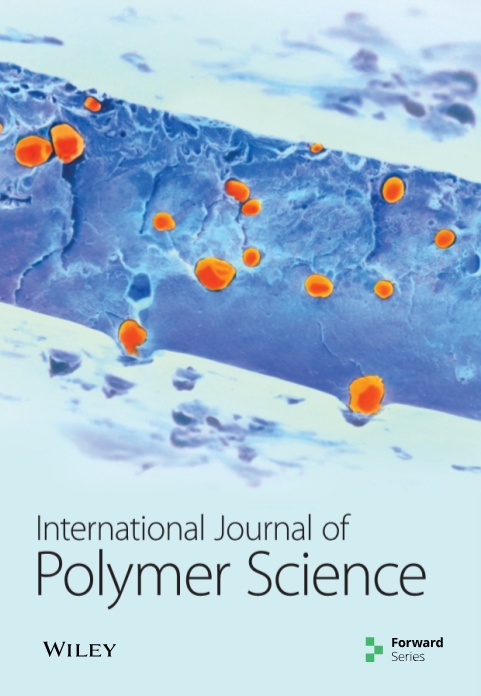天然纤维增强聚乳酸复合材料的物理、机械和热性能及表征:Miswak (Salvadora Persica L.)纤维
IF 4.4
4区 化学
Q2 POLYMER SCIENCE
引用次数: 6
摘要
7000年前,miswak纤维(MF)被用作口腔护理的牙刷。然而,自从塑料材料出现以来,它垄断了口腔护理行业。塑料制品的增加也促进了塑料废弃物处理后的堆积。因此,许多研究人员转向生物可降解产品来减少这一问题。本研究的目的是研究MF作为增强材料在复合材料中的化学、物理和机械性能,以适合替代牙刷材料。在不同重量百分比(0%、10%、20%和30%)的PLA复合材料中增强MF,并进行几种类型的测试。化学分析结果表明,纤维中纤维素含量高,可作为介质将应力载荷均匀地从纤维传递到基体。然而,结果表明,MF中纤维素含量低,影响了纤维与基质之间的界面结合不良。物理性能表明可以用作牙刷柄。随着纤维含量的增加,密度也随之增加。扫描电镜显微图表明,空洞的存在是导致复合材料力学性能下降的原因。力学结果表明,所提出的材料与商业应用中使用的材料相当。热结果方面,所制备复合材料的TGA测试熔点与纯PLA相当,说明所制备复合材料可以使用与PLA相似的加工温度。DSC结果表明,PLA/MF复合材料的Tg与复合材料的损失模量Tg相近。DMA结果表明,PLA/MF30在PLA/MF复合材料中具有最高的储存模量2062 MPa和最低的tan δ 0.6。因此,有可能使用这些材料作为复合材料的替代品,并通过预处理和/或增容剂来提高纤维强度。本文章由计算机程序翻译,如有差异,请以英文原文为准。
Physical, Mechanical, and Thermal Properties and Characterization of Natural Fiber Composites Reinforced Poly(Lactic Acid): Miswak (Salvadora Persica L.) Fibers
7000 years ago, miswak fiber (MF) was used as a toothbrush for oral care. However, since the emergence of plastic materials, it monopolized the oral care industry. The increment of plastic products also promotes accumulation of plastic wastes after its disposal. Thus, many researchers have turn to biodegradable products to reduce this problem. The aim of this study is to investigate the chemical, physical, and mechanical properties of MF as reinforcement in composites that are suitable to replace the toothbrush materials. The MF was reinforced in PLA composite with different weight percentage (0%, 10%, 20%, and 30%) and undergoes several types of testing. The chemical results show that there were high presence of cellulose in the fiber which could act as medium to transfer stress load equally from fiber to matrix. However, the results show low cellulosic contents in MF that affects the poor interfacial bonding between fiber and matrix. Physical properties shows a positive indication to be used as a toothbrush handle. As the fiber content increases, the density also increased. SEM micrographic illustrated the presence of voids as the cause for reduction in mechanical properties of composites. The mechanical results show the proposed material is comparable to the materials used in commercial applications. As for the thermal result, the TGA test melting point of the proposed composite material was comparable to the pure PLA, which means the proposed material can use similar processing temperature as PLA. DSC shows that Tg of PLA/MF composite is found to be similar to Tg in loss modulus of composites. DMA finding found that PLA/MF30 have the highest storage modulus 2062 MPa and the lowest tan δ 0.6 among PLA/MF composites. This concludes that there is a possibility of using these materials as an alternative in composites and increase the fiber strength by using pretreatments and/or compatibilizer.
求助全文
通过发布文献求助,成功后即可免费获取论文全文。
去求助
来源期刊

International Journal of Polymer Science
POLYMER SCIENCE-
CiteScore
6.10
自引率
0.00%
发文量
55
审稿时长
>12 weeks
期刊介绍:
The International Journal of Polymer Science is a peer-reviewed, Open Access journal that publishes original research articles as well as review articles on the chemistry and physics of macromolecules.
 求助内容:
求助内容: 应助结果提醒方式:
应助结果提醒方式:


